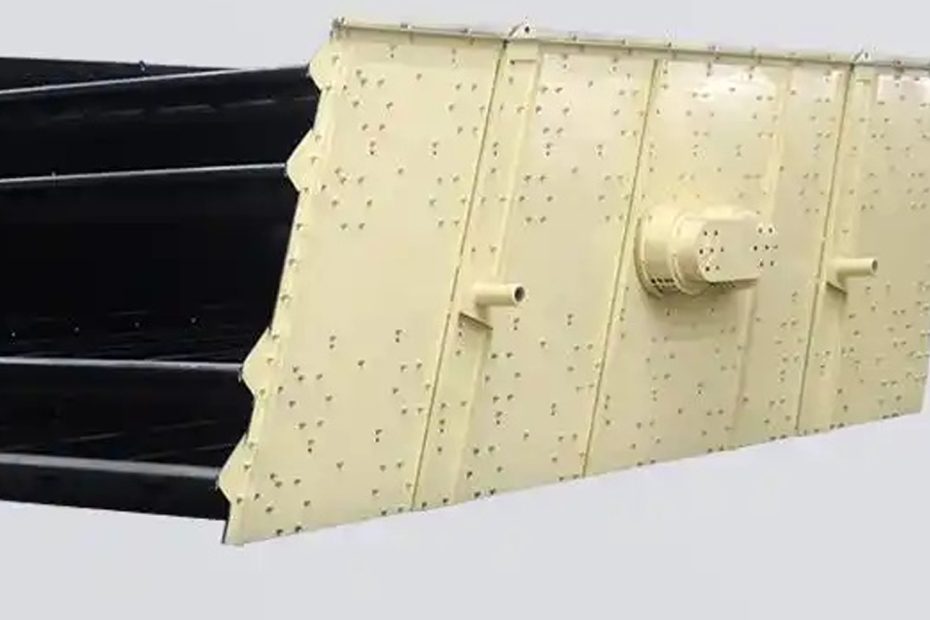The vibrating screen works by using the reciprocating vibration generated by the vibrator excitation. The vibrating screening machine has high screening efficiency, light weight, complete and diverse series, and multiple levels. It can meet the needs of dry material screening. The vibrating screening machine is mainly divided into linear vibrating screen, circular Motion vibrating screen, high-frequency vibrating screen, etc.
The circular motion vibrating screen refers to an inertial vibrating screen whose vibrating body, that is, the screen box, has an approximate circular motion trajectory. This type of vibrating screen is also called a single-axis vibrating screen.
The circular motion vibrating screen adopts a cylindrical eccentric shaft exciter and an eccentric block to adjust the amplitude. The material screen has a long flow line and a variety of screening specifications. It has the characteristics of reliable structure, strong excitation force, high screening efficiency, low vibration noise, strong and durable, easy maintenance, and safe use.
The vibration force generated by the vibration source of the circular motion vibrating screen is an inertial force that rotates around the fixed axis and changes in direction in a positive law. Its essence is the centrifugal force formed by the rotation of the eccentric mass around the fixed axis.

Working principle of circular motion vibrating screen
After the vibrating screen is started, the motor drives the eccentric block of the vibrator to rotate at high speed through the V-belt, generating a large centrifugal inertia force, which excites the screen box to produce a circular movement with a certain amplitude. The vibrator of the screen machine drives the screen box to make a directional jumping movement together, and the material on the screen is subjected to the impulse transmitted by the screen box on the inclined screen surface, resulting in continuous throwing movement. During this period, the material smaller than the screen surface diameter falls to the lower layer through the screen hole and becomes the screen material, and the material larger than the screen surface diameter is discharged from the discharge port after continuous jumping movement. The screening work is completed.
- Vibration source: The circular motion vibrating screen is usually equipped with a vibrator or a vibration motor as a vibration source. The vibrator will generate an exciting force, which is transmitted to the screen surface through the screen box.
- Screen box structure: The screen box is a circular structure, usually composed of two parts, the upper part is the feed port, and the lower part is the discharge port. One or more layers of screens are installed inside the screen box for screening materials.
- Exciting force transmission: The exciting force generated by the vibrator is transmitted to the screen box through a connecting device. The connection device is usually a spring or rubber support system that can make the screen box vibrate back and forth. The transmission of the exciting force makes the screen box reciprocate in the horizontal and vertical directions.
- Screening process: The material enters the screen box through the feed port and is subjected to the vibration force, causing the material to circulate on the screen surface. Large particles of material will pass through the screen holes quickly, while small particles will gradually pass through the screen holes. Therefore, material layers of different particle sizes are formed on the screen surface.
- Screening results: The screened material is discharged through the discharge port, while the material that does not pass through the screen holes continues to circulate on the screen surface until it passes through the screen holes.
Conclusion
The circular motion vibrating screen is a new type of vibrating screen conveyor system with circular , multiple layers and high efficiency. It generally refers to the circular motion of the material on the circular motion vibrating screen mesh surface. It is widely used in mining, coal, metallurgy, energy, chemical industry and other industries for product classification.
